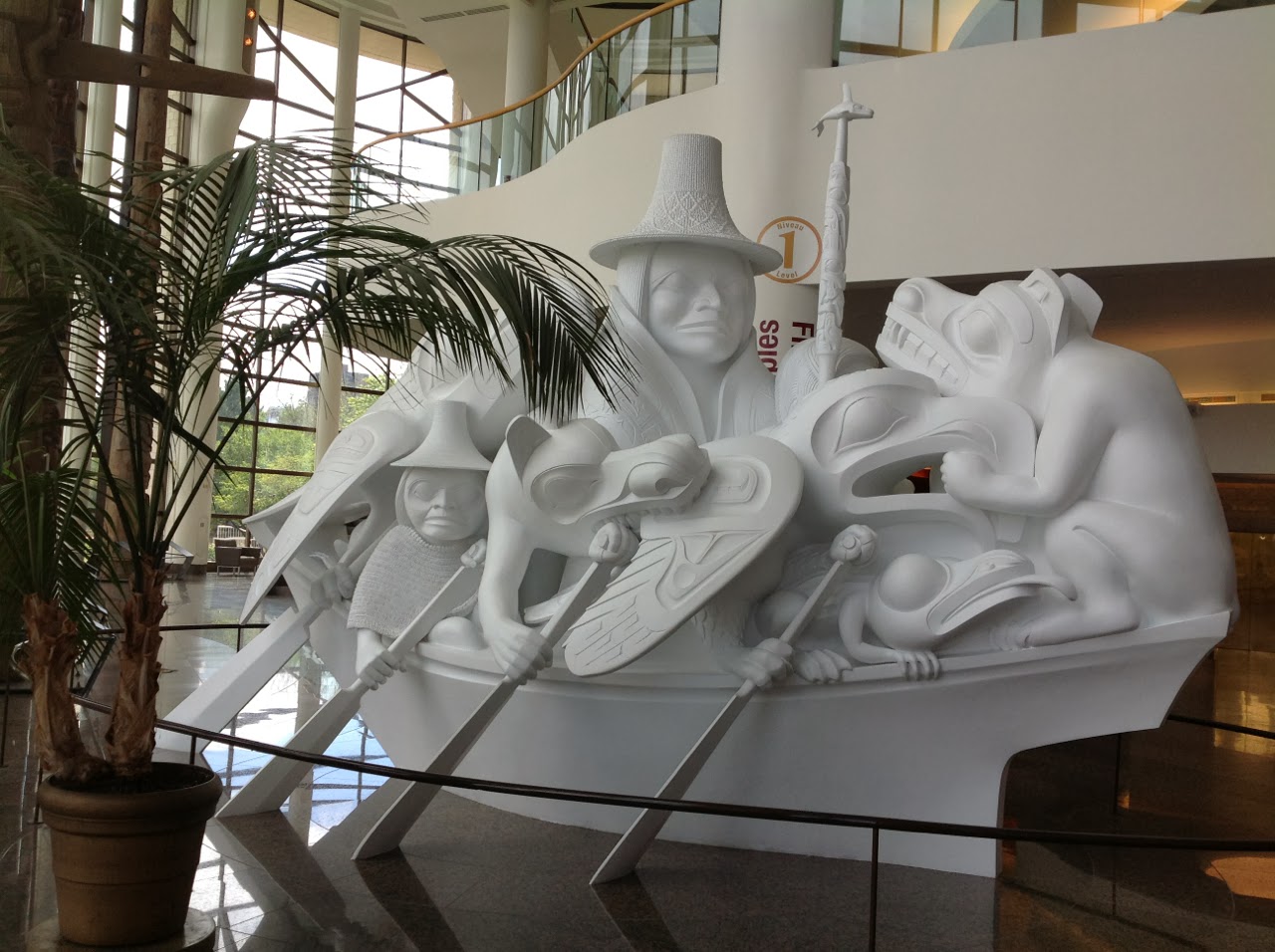All these architects have their signature look. Frank Gehry is into sinuous curves; Daniel Libeskind has his crashing diagonals; Moshe Safdie goes for tall square columns on the exterior and lofty skylights inside. Cardinal's thing is the metaphor of canyons and cliffs, with architectural forms that imitate land forms, characterized by flowing lines and shapes that create an integrated whole.
The museum complex consists of two, massive three-story buildings—one for exhibits, the other for administration and storage—plus a grand staircase down to a wide swathe of lawn that slopes down to the river. Instead of treating each of these as a separate element, Cardinal integrated them into a whole using the landscape metaphor. The buildings become the sides of a canyon and the staircase flows between them like an alluvial moraine. On one side of the staircase is a water feature like a multilevel waterfall ending in a long reflecting pool. A visitor can hardly resist strolling down the gentle stairs to view the modern sculpture sprinkled about the park and the marvelous view of Parliament Hill on the other side of the river.
 |
| Canadian Museum of Civilization |
 |
| Staircase to River |
 |
| Parliament Hill, Ottawa |
The centerpiece of the museum is the Grand Hall, which has a curving, six-storey window wall that repeats the flowing lines of the exterior staircase and looks out on the waterfall feature, the green park, and Parliament Hill. It is a spectacular public space.
 |
| Grand Hall |
 |
| Totem Poles from First Peoples of Pacific Northwest |
A contemporary interpretation of the symbolism of First Nations artifacts is a plaster cast of a bronze sculpture done by Bill Reid in 1989 for the Canadian Chancery in Washington, D. C.
 |
| Plaster Cast of Spirit of Haida, 1989 |
Some of the exhibits represented the economic activities that influenced the nations development, such as timber, agriculture, and oil. Another series commemorated the role of various ethnic groups in the settlement of the nation, including Ukrainians, Filipinos and Black people.
 |
| St. Onuphrius Ukrainian Catholic Church, 1952 |
 |
| Pierre Trudeau, Prime Minister |
We could have spent the whole day at the museum of civilization, but Dan wanted me to see the exhibit of Canadian art at the National Gallery, which I had missed the day before due to illness. He felt it was the most satisfying part of the museum, and I had to agree. Several excellent painters were represented in depth. He and I went around naming and comparing and trying to learn their various styles.
Canadian art history doesn't have as much depth as American art history because their vast land is sparsely populated. Settlers and pioneers made art from early on, but it takes large population centers to really develop and promote art.
Here are the names we picked up today. It is gratifying that their most famous painter internationally is Emily Carr, who depicted the villages of the First Nations in the Pacific Northwest. An artist and educator named Arthur Lismer promoted stylized landscape painting and inspired the Group of Seven. My favorite of these landscape painters was Lawren Harris. I was really taken by the work of Alex Colville, whose figurative work is related to photo-realism and precisionism.
We bought heavy books at the museum shop, so we took the taxi straight back to the hotel, even though the light was beautiful and everything looked photogenic. It was time to rest a bit. After a while Dan was ready to go out for dinner to a good Thai cafe he had discovered the night before. I stayed in and rested. He came back in rather late, having watched the evening light show on the Parliament buildings, which was accompanied by fireworks. He also purchased maps of Quebec and Montreal at a book store. His stamina still impresses me.

